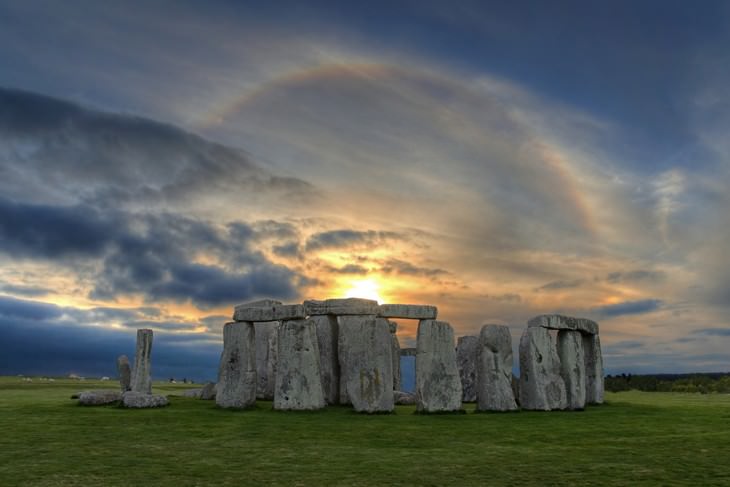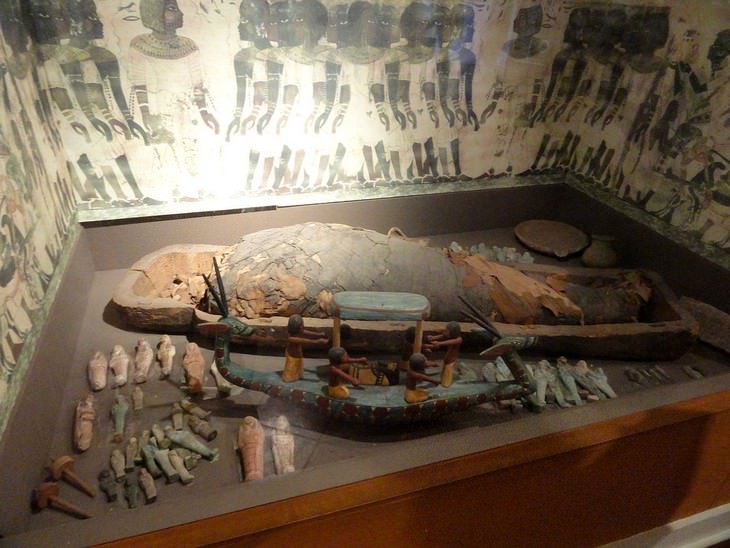

The question of how Stonehenge came into being is one that baffled archeologists for centuries. The prehistoric monument is located it Southern UK’s Salisbury Plain and is comprised of roughly 100 upright stones placed in a circular layout. While the complete story remains a mystery, exciting recent findings allowed archeologists to add a piece to the puzzle. According to the study published in the journal Science Advances Stonehenge's builders dragged most of the 50,000-pound (22,700-kilogram), 20 feet (9 meters) tall sandstone boulders, called sarsens, from a woodland area in Wiltshire. The area, called West Woods, is located more than 15 miles (25 kilometers) from the monument.
"Our results suggest that most of the sarsens at Stonehenge share a common chemistry, which is why we're saying they come from the same area," David Nash, the lead author of the study, said in a statement to Business Insider. The new findings don’t reveal what Stonehenge was used for, but speculations include burial and cremating grounds and a place of ancient healing. However, knowing where the sarsens came from could at least help experts figure out how the monument's builders erected it and the route they took to transport their building materials. The new study also supports the idea that the sarsens were carved and put into standing position by the builders at the same time, about 2,500 BC. The work was done in Stonehenge's location after the rocks were transported en masse.
Related: No One Knows Exactly How These Monuments Came into Being

Image Source: Wikimedia Commons
While most of us were only able to gaze at Egypt’s pyramids only online, some major archeological findings accrued in the country, in the midst of the coronavirus crisis. In May 2020, Egypt's Ministry of Tourism and Antiquities has announced the unearthing of five limestone sarcophagi (a stone coffin, typically adorned with a sculpture or inscription) and four wooden coffins containing human mummies.
These incredible archeological finds were inside a burial shaft stretching nine meters below ground and located in Saqqara, an ancient burial ground about 20 miles south of Cairo. Also excavated from the shaft was an incredible array of small artifacts, including 365 figurines, some inscribed with hieroglyphics. These small statues are called Ushabti, and they were usually buried in Egyptian graves to aid the body in its afterlife.
Related: 9 Facts About Ancient Egypt You Probably Didn’t Know
Another exciting excavation was that of mummy dating back to Egypt's 17th dynasty, circa 1550 BCE. A joint Egyptian-Spanish archeological mission discovered the coffin in Southern Egypt, in a necropolis called Draa Abul Naga. The mummified young woman is believed to have been around 15 or 16 years old at the time of her death.

Smallpox was one of the deadliest diseases the humankind has known. It is estimated to have killed 300-500 million people in the 20th century alone. A global vaccination program led to the eradication of the disease in 1980, and the virus is now stored in only two laboratories in the world. However, despite the mark it left, the origins of Smallpox remain murky. Recently, researchers have found the world’s earliest confirmed case of smallpox, revealing that the disease was widespread across northern Europe during the Viking age. Before this, the earliest case of smallpox confirmed by genetic data was of a 17th-century hold in Lithuania.
The researchers detected the variola virus (the virus causing the infectious disease) in the teeth and bones of 11 men and women from Denmark and Russia, dating from about 600 to 1050. While these 11 individuals were infected with the virus when they died, it is not clear if this is what caused their deaths. “I think it is fair to assume the Vikings have been the superspreaders,” said Eske Willerslev, professor of ecology and evolution at the University of Cambridge, who led the research. Most importantly, these findings could shed light on the evolution of variola virus and even provide clues on how other pox diseases in animals could mutate and potentially pose a risk to humans.
Please share this article with others!